Photographs by Maura McEvoy
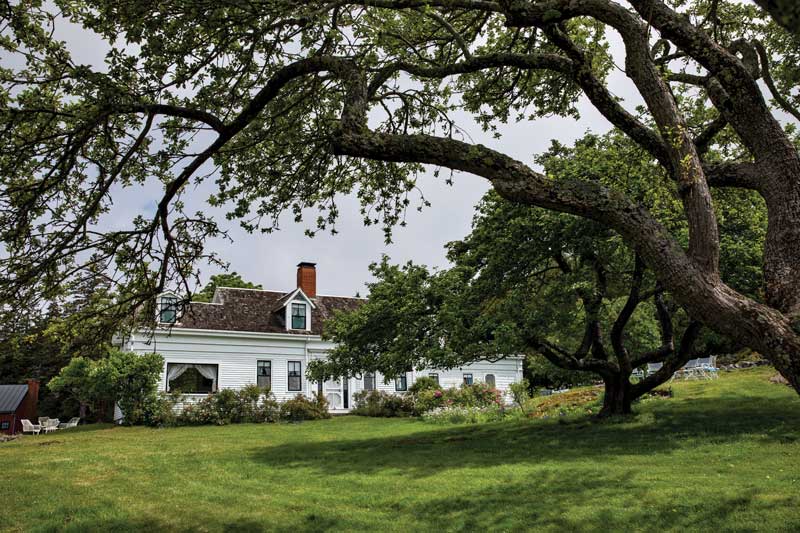 Built in 1843, this Greek Revival farmhouse on Vinalhaven continues to belong to the family of the late photographer Eliot Elisofon.
Built in 1843, this Greek Revival farmhouse on Vinalhaven continues to belong to the family of the late photographer Eliot Elisofon.
An imposing picture window frames a single, striking apple tree on the sloping grounds of Elin Elisofon’s island home, a Greek Revival saltwater farmhouse built in 1843, around the same time the mighty old apple took root. Both window and tree perfectly symbolize the soul of this place—and the perspective of its owner.
A conservationist, artist and realtor, she has a desire to protect and preserve Vinalhaven’s vernacular architecture, community, and wildlife habitats. Elisofon feels strongly about honoring the past. “I was very fortunate to know the wonderful descendants of the original builders of the house, which makes caring for it even more important to me. A conservation easement held by Maine Coast Heritage Trust will assure future owners honor the past and protect it for the future,” she said.
Overflowing with the hooked and braided rugs, folk art and antiques her mother, Joan, and father, globetrotting LIFE magazine photojournalist Eliot Elisofon collected, every room in the house is a tableau vivant. It took Elin five years to decide that taking down a wall to open up the kitchen was an all right thing to do. She assiduously searched for floral wallpaper that closely mimics the Sears Roebuck version her father put up soon after he bought the home in 1941. Tucked in among it all are some of her own rugs, including hooked pieces featuring her dogs, with their own fur woven into them.
“My father was a painter, photographer, author, filmmaker, and collector,” said Elisofon. “He traveled all over the world, but was happiest here painting watercolors, cooking, sailing, planting and growing trees, flowers and vegetables....Knowing how hard the families who came before us worked to sustain themselves, and care for their home, is at the heart of my love for this place and my sense of responsibility for its future.” Some of that credit goes to her beloved father. In the family graveyard tucked into the fruit trees that he planted, his headstone repeats his life’s mission, to learn and share knowledge; it reads, “He helped the world to see.”
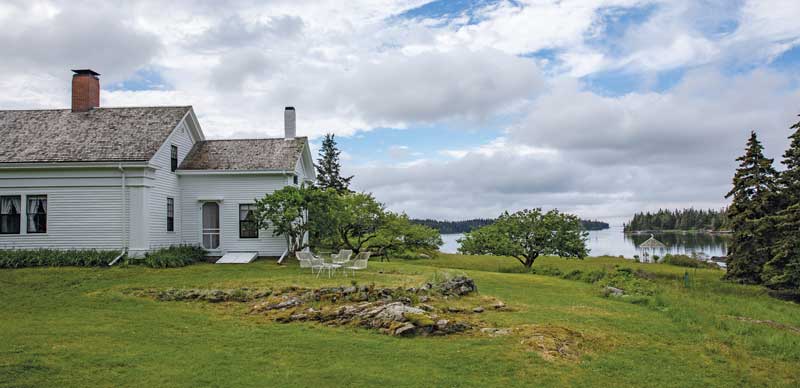 The farmhouse looks out over Crockett Cove. When Eliot Elisofon was alive, his wife turned a former chicken coop into a studio by the water where he painted watercolors.
The farmhouse looks out over Crockett Cove. When Eliot Elisofon was alive, his wife turned a former chicken coop into a studio by the water where he painted watercolors.
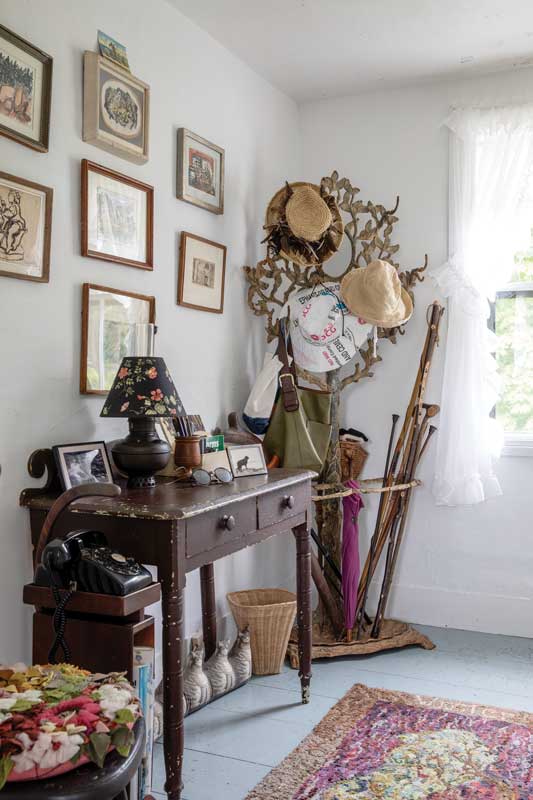 The hooked rug in the “telephone hall” portrays an apple tree and includes the names of the four families that have lived in the home since it was built.
The hooked rug in the “telephone hall” portrays an apple tree and includes the names of the four families that have lived in the home since it was built.
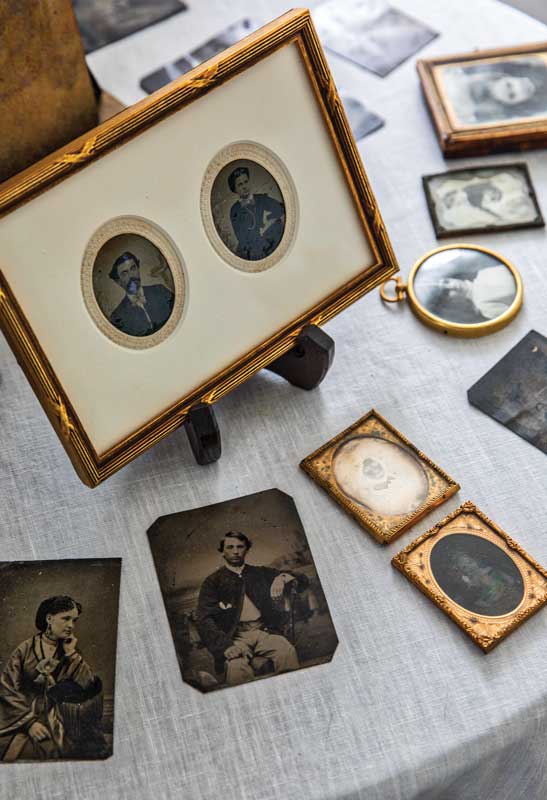 The man and woman in the framed photo are the original builders of the 1843 home, Joel and Mary Jane Philbrook.
The man and woman in the framed photo are the original builders of the 1843 home, Joel and Mary Jane Philbrook.
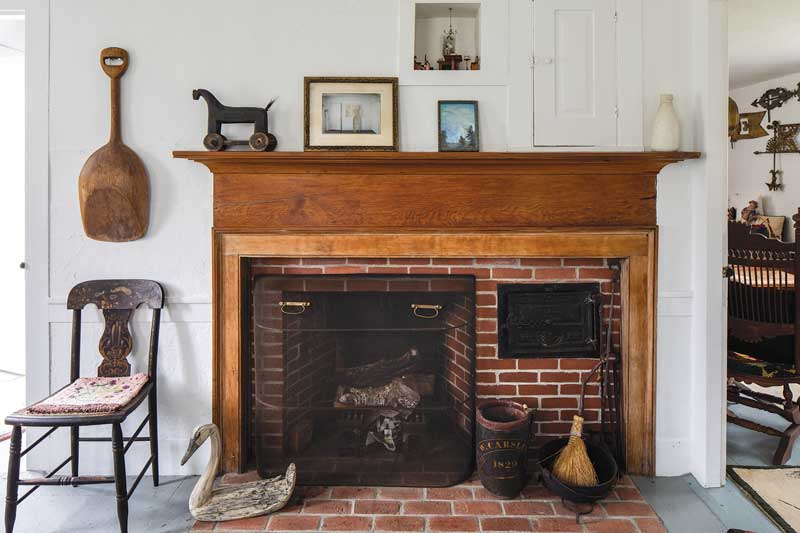 The dining room, which was once a kitchen, contains a mantle and fireplace cradle for pots and a bread oven to the right. The central chimney in the house is linked to three fireplaces.
The dining room, which was once a kitchen, contains a mantle and fireplace cradle for pots and a bread oven to the right. The central chimney in the house is linked to three fireplaces.
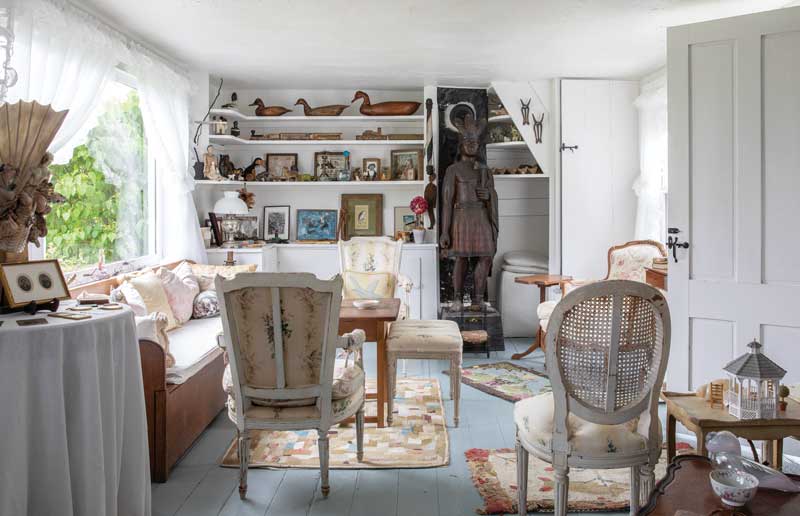 Elisofon’s mother turned the former kitchen into a living room. The statue is propped in front of the chimney where an early owner, Elsie Calderwood, had her cookstove. The door on the right goes to a stairway.
Elisofon’s mother turned the former kitchen into a living room. The statue is propped in front of the chimney where an early owner, Elsie Calderwood, had her cookstove. The door on the right goes to a stairway.
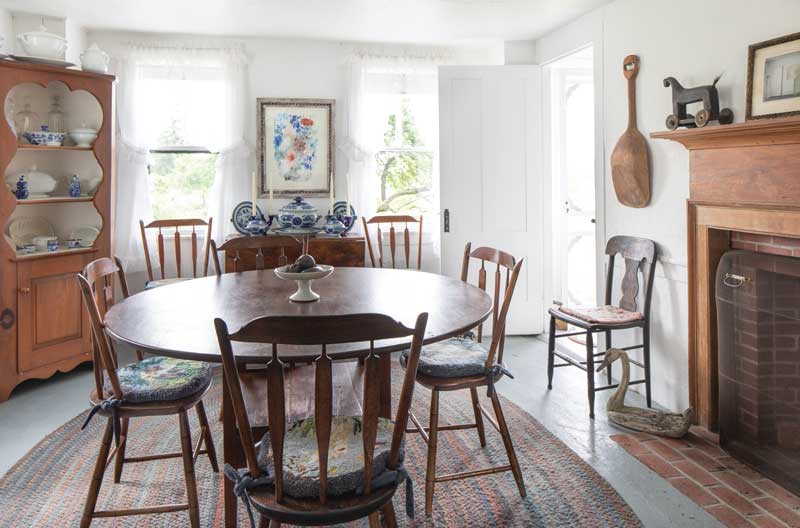 The home is filled with an eclectic collection of folk art and art mostly collected by Elin Elisofon’s parents.
The home is filled with an eclectic collection of folk art and art mostly collected by Elin Elisofon’s parents.
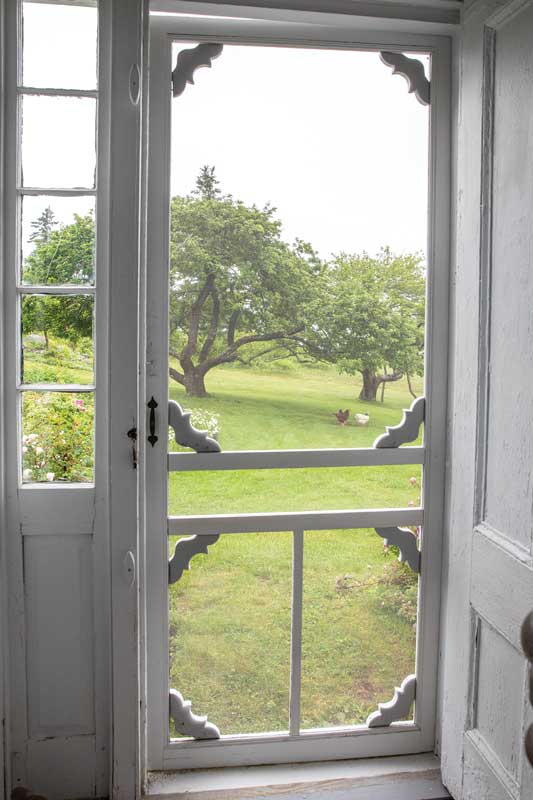
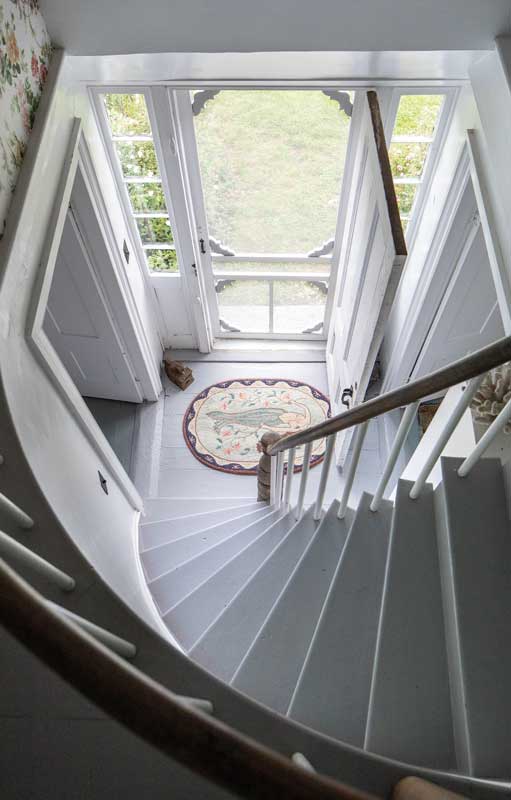 The front hall contains a rare circular stairway.
The front hall contains a rare circular stairway.
✮
Kathleen Hackett is a co-author of The Maine House (Vendome Press) and most recently authored Brooklyn Interiors (Rizzoli), At the Artisan’s Table (Vendome Press) and The Pain d’Avignon Baking Book: A War, An Unlikely Bakery, and a Master Class in Bread (Avery). She lives in Brooklyn, New York, and Rockport, Maine.






